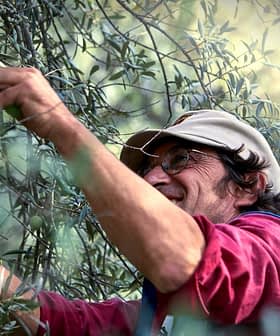Bumper Harvest in Spain Comes With Drought, Coronavirus Concerns
Spain is expected to produce 1.6 million tons of olive oil this season. Slowing sales in the hospitality sector and a dry summer and spring have some producers concerned.
The 2020 olive harvest is in full swing throughout Spain, with the world’s largest olive oil producing country expected to yield 1,633,000 tons, the second-highest total in the past decade.
According to data compiled by Juan Vilar Strategic Consultants, Spanish producers are expecting a healthy rebound. This year’s harvest is set to be 15-percent higher than the rolling five-year average and a marked improvement from the previous harvest, which saw the country yield just 1.25 million tons.
We started on October 12 and for now it is looking good despite this drought that we are suffering.
Despite optimistic anecdotal reports from Jaén, the country’s largest olive oil-producing province by a wide margin, there remain concerns among some olive farmers regarding the dry spring and summer months as well as the second wave of Covid-19 infections plaguing the country.
“We started on October 12 and for now it is looking good despite the weather, this drought that we are suffering,” Paco Vañó, the co-owner of Castillo de Canena, told Agropopular.
See Also:Production NewsDrought has been one of the main concerns of the Jaén-based farmer, who irrigates all of his olive trees.
“Water is essential to achieve abundant harvests and to produce balanced oils with balance and complexity,” Vañó said.
In the coming week, he expects all of the province’s olive farmers to begin harvesting. For the 2020/21 crop year, Jaén is expected to produce 630,000 tons of olive oil – as much as Italy, Portugal and Greece combined.
While hot and dry weather is becoming increasingly normal across all of southern Spain, the exceptional circumstances caused by the resurgence Covid-19 pandemic have also been causing concern.
As with the end of the previous crop year, Vañó said that he expected bulk olive oil sales to the restaurant, hotel and café (Horeca) sector to remain quite low during 2020/21, with only a minor offset from the increase in domestic olive oil consumption.
“[The pandemic] has obstructed very important channels, including the Horeca sector,” he said. “[But] when some roads close, others open.”








